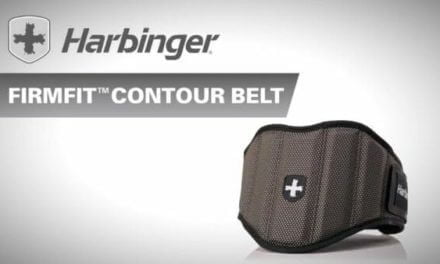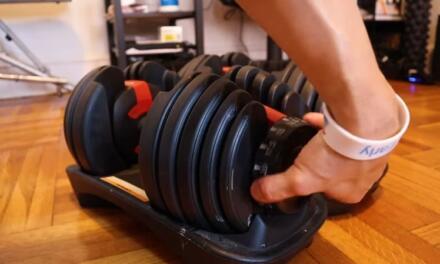In the world of weightlifting, safety and performance go hand in hand. One of the essential accessories for weightlifters and powerlifters is a belt. These belts provide support to the core, stabilize the spine, and enhance lifting performance.
However, not all weightlifting belts are created equal. There are different types of belt fastening mechanisms, with single prong, double prong, and lever buckle being the most common.
Each of these options has its own set of advantages and disadvantages, and choosing the right one can significantly impact your lifting experience.
In this comprehensive guide, we will delve into the differences between single prong, double prong, and lever buckle gym weightlifting belts, and explore the advantages and disadvantages of each.
Single Prong Weightlifting Belts
Single prong weightlifting belts are a classic choice for many lifters. They feature a single, sturdy prong that fits through a series of holes on one end of the belt, allowing you to secure it tightly around your waist. Here are the key characteristics of single prong belts:
Advantages Of A Single Prong Gym Belt
Ease of Use: Single prong belts are simple to put on and take off. The single prong design makes it quick and hassle-free to adjust the tightness to your preference.
Durability: These belts are known for their durability. The single prong design distributes stress evenly across the belt, reducing wear and tear over time.
Custom Fit: With multiple holes for adjustment, you can find the perfect fit for your body, ensuring optimal support and comfort during lifts.
Cost-Efficient: Single prong belts are typically more affordable than their double prong and lever buckle counterparts, making them a budget-friendly option for beginners or those on a tight budget.
Disadvantages
Slippage: Some lifters may experience slight belt slippage during heavy lifts. This can be mitigated by ensuring the prong is securely fastened through the right hole.
Adjustment Time: Fine-tuning the tightness of a single prong belt can take a little longer compared to lever buckle belts, which offer quick, precise adjustments.
Prong Poking: While rare, there is a possibility of the prong poking into your abdomen during certain movements, causing discomfort.
Double Prong Weightlifting Belts
Double prong weightlifting belts are similar to single prong belts but feature two prongs instead of one. These belts provide added stability and security due to the extra prong. Let’s delve into their advantages and disadvantages:
Advantages Of A Double Prong Belt
Enhanced Stability: The dual prongs ensure a more secure fit, reducing the risk of belt slippage during heavy lifts. This added stability can be particularly beneficial for powerlifting movements.
Improved Weight Distribution: The double prong design distributes the pressure evenly across the belt, enhancing durability and reducing the likelihood of deformation over time.
Custom Fit: Like single prong belts, double prong belts offer multiple holes for adjustment, allowing for a customized fit.
Disadvantages
Difficulty in Fastening: Some lifters find it more challenging to fasten and unfasten double prong belts, especially when compared to single prong belts and lever buckle belts.
Limited Quick Adjustability: Adjusting the tightness of a double prong belt may not be as quick and easy as using a lever buckle belt, which offers rapid adjustments.
Price: Double prong belts are typically more expensive than single prong belts due to the added materials and construction complexity.
Lever Buckle Weightlifting Belts
Lever buckle weightlifting belts are a modern innovation in the world of lifting accessories. These belts use a lever mechanism to secure the belt tightly around your waist. Here are the main characteristics and considerations for lever buckle belts:
Advantages Lever Buckle Weightlifting Belt
Quick and Precise Adjustments: Lever buckle belts are renowned for their rapid and precise adjustment capabilities. You can easily tighten or loosen the belt to your desired level of support with a simple flick of the lever.
Minimal Slippage: The lever mechanism virtually eliminates the possibility of belt slippage, ensuring consistent support during lifts.
Durability: Lever buckle belts are often constructed with high-quality materials, making them durable and resistant to wear and tear.
Comfort: Many lifters find lever buckle belts more comfortable, as they lack prongs that can dig into the abdomen or cause discomfort during movements.
Disadvantages
Price: Lever buckle belts are typically the most expensive option among the three. The added features and precision come at a cost.
Learning Curve: Some lifters may need time to get used to the lever mechanism and ensure it is properly set for their body type and lifting style.
Potential for Mechanical Failure: While rare, lever mechanisms can break or malfunction over time, rendering the belt unusable until repaired or replaced.
Choosing the Right Belt for You
The choice between a single prong, double prong, or lever buckle weightlifting belt ultimately depends on your individual preferences, lifting goals, and budget.
As well as buying ready made belts, there are also options to design your own custom belt. Here are some considerations to help you make an informed decision:
- Lifting Style: Consider the type of lifts you primarily perform. Powerlifters who focus on the squat, deadlift, and bench press may benefit from the added stability of double prong or lever buckle belts. In contrast, Olympic weightlifters who perform more dynamic movements may find single prong belts sufficient.
- Budget: Your budget plays a significant role in your choice. If you are just starting and have limited funds, a single prong belt offers an affordable entry point. If you can invest more, you may opt for the added features of a double prong or lever buckle belt.
- Comfort and Fit: Personal comfort is crucial when choosing a weightlifting belt. If you have experienced discomfort with prong belts in the past, a lever buckle belt might be the more comfortable option for you.
- Adjustability: Think about how often you need to adjust the tightness of your belt during a workout. If you prefer quick, precise adjustments, a lever buckle belt might be the best choice.
- Durability: Consider the longevity of the belt. If you’re planning for long-term use, a high-quality double prong or lever buckle belt may be worth the investment.
- Mechanical Aptitude: If you are mechanically inclined and comfortable with adjusting and maintaining equipment, a lever buckle belt may not pose any challenges. However, if you prefer a simple and straightforward design, prong belts are less complicated.
Conclusion
Single prong, double prong, and lever buckle gym weightlifting belts each have their unique advantages and disadvantages. The choice ultimately depends on your personal preferences, lifting style, budget, and comfort.
Single prong belts are a classic and budget-friendly option with ease of use, while double prong belts offer enhanced stability. Lever buckle belts are known for their quick adjustments and minimal slippage.
As you continue your weightlifting journey, it’s essential to select the belt that best suits your needs and helps you perform at your best while ensuring safety and comfort during your lifts.











